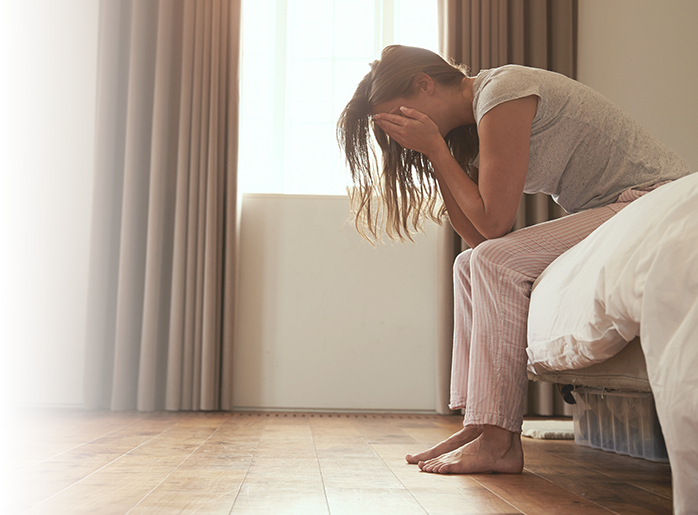Restless Legs Syndrome
Know More: Restless Legs Syndrome
Trustworthy information, straight from the source. Education is the first step in an empowering healthcare plan. Learn more about restless legs syndrome from prevention to diagnosis and treatment.

Condition Overview
What is restless legs syndrome?
Restless legs syndrome (RLS) is a disorder characterized by throbbing, pulling, creeping or other unpleasant sensations in the legs and an uncontrollable urge to move them. Symptoms occur primarily at night when a person is relaxing or at rest and can increase in severity during the night. Moving the legs relieves the discomfort.
Because it usually interferes with sleep, it also is considered a sleep disorder.
Researchers are trying to determine the exact cause of RLS. It may be caused by changes in certain brain chemicals, such as dopamine. RLS also may be genetic; it is more common among family members. RLS symptoms become more severe in people who have iron deficiency.
Diagnosis & Treatment Options
What are the signs and symptoms of restless legs syndrome?
Restless legs syndrome symptoms include:
- Feeling a strong urge to move your legs when you are resting or sitting still. You also may have a creepy-crawly, tugging, itchy or tingly sensation.
- Many people who have RLS also kick or jerk their legs while sleeping.
- Symptoms get better when you walk, stretch, or kick. They may return once you stop moving.
- Symptoms are worse in the evening or nighttime hours.
- Symptoms are not caused by leg cramps, muscle aches or arthritis.
How is restless legs syndrome diagnosed?
There is no specific test to detect restless legs syndrome. Your doctor will review your symptoms and determine if you have the disease. Sometimes a sleep study is needed to determine if another sleep disorder is disturbing your sleep, but a sleep study is not necessary for the diagnosis of RLS.
How is restless legs syndrome treated?
- Exercise: Activities such as exercise, leg massages and warm baths can help reduce mild RLS symptoms.
- Medication: Prescription medications can be helpful if you have more severe symptoms. Your doctor will help you decide if a medication is the best option for you. Some medications need to be taken daily at the same time of day. Others need to be taken only when symptoms bother you.
- Supplements: Iron supplements can help relieve symptoms in people who are iron deficient.
How can I manage restless legs syndrome?
In addition to taking medications, many other strategies can help ease symptoms of restless legs syndrome;
- Eat a well-balanced diet including foods rich in iron.
- Get some exercise every day.
- Stretch or massage the legs when you notice RLS symptoms.
- Use heating pads on your legs when you are awake or take a warm bath to reduce symptoms.
- Reduce your level of stress.
- Limit caffeine and alcohol and do not smoke. All of these can worsen RLS.
Preparing for Care
What are restless legs disorder care options?
Talk with your healthcare provider about your symptoms. It may help to write down your symptoms including the time of day when they occur.
- Discuss all of your medications and herbal supplements with your healthcare provider. Some of these could cause RLS symptoms or make them worse.
- Your healthcare provider may test your iron levels and recommend iron supplements if your iron levels are low.
- Your healthcare provider may schedule you for a sleep study if you have symptoms of another sleep disorder such as sleep apnea.
- There are several prescription medications used in treating RLS. Your healthcare provider can help you determine the most appropriate medication to use.
